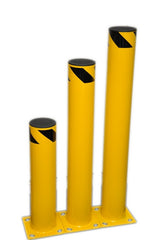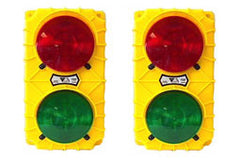Lift trucks are an essential part of warehousing and supply chains all over the world. Unfortunately, they also represent a significant hazard to people working within the same space. Studies have shown that there are an average of 96,000 forklift accidents each year, and they can cost your business an average of $135,000 annually. Here are some safety products you need in your warehouse: four must have items.
Why you need warehouse safety products
Almost 80% of forklift accidents involve a pedestrian injury. These injuries can occur when forklifts strike a pedestrian or a load is unstable and falls. If that is not scary enough, these kinds of accidents cost workers in the manufacturing industry 85 lives every year. According to a recent study by the Occupational Safety and Health Administration (OSHA) 70 percent of those accidents could have been avoided with simple precautionary measures.
Hopefully by now you have invested in quality safety supplies such as operator safety training materials, seat belts, vests, and harnesses (if you have put it off, click here to see our selection). Assuming that your employees know the rules and you follow OSHA specifications with all of your equipment, what else can you do to help keep your equipment, product, and employees safe from these kinds of accidents?
Products that protect your warehouse, employees and product
Fortunately, there are numerous technologies on the market today to help combat safety issues in an industrial application:
1. Retractable Belts - This type of barrier is completely portable and easy to manipulate when you need help to define the pedestrian walkway or restrict access to an unsafe area. These belts can also help direct heavy machinery away from your valuable merchandise and employees when necessary. This is a great low-cost option with a variety of feature options, such as color, and shape. We also offer multiple end piece options, such as magnetic, clip-on, and cone topper to accommodate your needs.
2. Steel Warehouse Bollards - In certain environments, a single permanent barrier is going to be your best choice. Warehouse bollards are both functional and sturdy. Also, they can be used in both indoor- and outdoor-based applications. They are manufactured in many different materials and sizes. Warehouse bollards are used to help direct traffic flow in your warehouse, and prevent potential collisions from heavy equipment. These bollards can absorb collisions, which heightens warehouse safety and security. They require very minimal upkeep, too.
3. Dock Safety - If you are one of the thousands of warehouses that have busy loading docks, you want to ensure you have the best product to protect your employees and equipment both day and night. Energy efficient LED dock lights come in multiple shapes, colors, and voltages to make sure you have the proper illumination to improve visibility, safety and efficiency around your loading dock during all shifts.
4. Collision Warning System - The Collision Sentry is a warning system that easily mounts to any right corner with its magnetic backing or the included z-clip. No wire installation required. Sentry utilizes infrared motion detectors for this system to “see” around blind corners. The Collision Sentry indicator lights flash to warn pedestrians and forklift operators of any movement that could cause a collision. It is an inexpensive and very mobile option that our customers like.
Where to purchase warehouse safety products
At the Materials Handling Store, we offer all of these options along with many other items. If you have any questions or would like to request more information about any of the above warehouse safety products, please contact us at store@raymondhandling.com or call us directly at 844-445-1119.
Sources:






